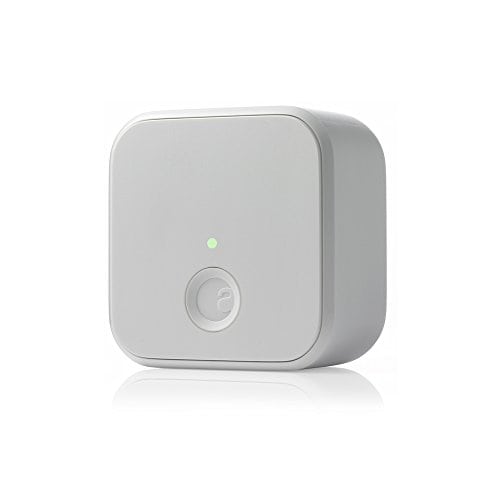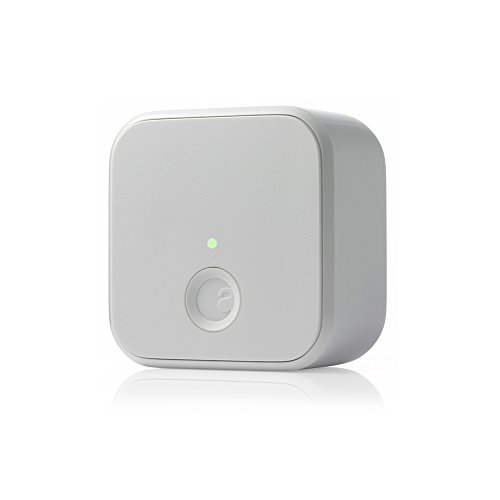In this step-by-step guide, I will walk you through the process of choosing the right smart home platform for integration. Smart home integration refers to the seamless connection and control of various devices and systems within a home, such as lighting, heating, security, and entertainment, through a central platform. The purpose of this guide is to help you navigate the complex landscape of smart home platforms and make an informed decision that aligns with your specific needs and preferences. By following the steps outlined in this guide, you will be able to evaluate different platforms, consider compatibility, functionality, and user experience, and ultimately choose the right smart home platform for a seamless integration experience.
Top-rated smart home integration products
Research available smart home platforms
To start researching available smart home platforms, begin by exploring the market for different options. Look into the various features and functionalities that each platform offers. This will help you gain a better understanding of the capabilities of each platform and make an informed decision.
To begin your research, you can start by visiting the websites of different smart home platform providers. Take a look at their product descriptions and specifications to get an overview of what they offer. Additionally, you can read reviews and comparisons of different platforms to gather more information and insights.
Make sure to consider factors such as compatibility with your existing devices, ease of use, and the availability of third-party integrations. It can also be helpful to join online communities or forums where users discuss their experiences with different smart home platforms.
By thoroughly researching the available smart home platforms, you can make a well-informed decision and select the one that best suits your needs and preferences.
Consider your specific needs and requirements
Identifying your specific needs and requirements is crucial when integrating a smart home system. By considering factors such as compatibility with existing devices, scalability, security features, and user interface, you can ensure a seamless and efficient integration process.
To identify your specific needs and requirements for smart home integration, follow these steps:
- Assess compatibility: Take inventory of your existing devices and determine their compatibility with the smart home system you are considering. Check if they use the same communication protocols (such as Wi-Fi, Bluetooth, or Zigbee) or if additional adapters or hubs are required.
- Evaluate scalability: Consider your future needs and plans for expanding your smart home. Determine whether the system you choose can accommodate additional devices and functionalities as your needs evolve. Look for systems that offer modular or expandable options.
- Prioritize security: Security is paramount when it comes to smart home integration. Look for features such as end-to-end encryption, strong user authentication, and regular software updates. Check if the system has been independently tested and certified for security standards.
- Analyze user interface: A user-friendly interface is essential for managing and controlling your smart home. Consider whether you prefer a smartphone app, a voice-controlled assistant, or a combination of both. Look for intuitive interfaces that provide easy access to all connected devices and automation settings.
Remember to weigh each factor against your specific needs and preferences. By considering compatibility, scalability, security features, and user interface, you can make an informed decision about the smart home system that best suits your requirements.
Evaluate compatibility with existing devices
Check the compatibility of the smart home platform with your existing devices by reviewing the list of supported devices provided by the platform. Look for information on whether your specific devices, such as smart bulbs, thermostats, or security cameras, are supported. For example, if you already have Philips Hue bulbs installed in your home, verify that the smart home platform is compatible with them. Additionally, ensure that the platform supports the integration of your preferred devices. For instance, if you have a Nest thermostat and want it to seamlessly integrate with the smart home platform, confirm that this integration is supported.
Assess scalability and future-proofing
Consider the scalability of the smart home platform. Assess whether it will be able to accommodate future additions or changes to your smart home setup. Look for platforms that offer flexibility and compatibility with a wide range of devices. For example, check if the platform supports popular smart home protocols like Zigbee, Z-Wave, or Wi-Fi, as these will ensure compatibility with a wide variety of devices from different manufacturers. Additionally, investigate if the platform allows for easy integration of new devices or features. A platform that offers an open API or supports third-party integrations will provide the flexibility to add new devices or functionalities as they become available. By choosing a scalable smart home platform, you can future-proof your setup and ensure it can adapt to your evolving needs.
Analyze security features
Ensure that the smart home platform prioritizes security by following these steps:
- Check for two-factor authentication: Look for a smart home platform that offers two-factor authentication as a security feature. This adds an extra layer of protection by requiring a second form of verification, such as a unique code sent to your mobile device, in addition to your password. Enable this feature to enhance the security of your smart home.
- Verify encryption protocols: It is crucial to choose a smart home platform that utilizes encryption to safeguard your data. Encryption ensures that any information transmitted between your devices and the platform is encoded and can only be accessed by authorized parties. Look for platforms that use strong encryption algorithms, such as AES (Advanced Encryption Standard), to protect your sensitive data.
- Ensure regular security updates: Regular security updates are vital for keeping your smart home platform secure. Look for a platform that actively releases updates to address any potential vulnerabilities or security risks. These updates may include patches, bug fixes, or security enhancements. Stay vigilant and regularly check for and install any available updates to ensure your smart home remains protected against emerging threats.
By following these instructions, you can ensure that the smart home platform you choose prioritizes security by incorporating features such as two-factor authentication, encryption, and regular security updates. This will help protect your smart home from potential threats and enhance your overall security and peace of mind.
Evaluate user interface and ease of use
Evaluate the user interface of the smart home platform. Begin by accessing the platform and exploring its interface. Take note of the layout and organization of the different features and functionalities. Look for a platform that offers an intuitive and user-friendly interface that will be easy for you to navigate and control your smart home devices.
Pay attention to the visual design and aesthetics of the interface. Is it visually appealing and well-designed? Are the icons and buttons clear and easily recognizable? Evaluate the ease of use by testing different actions and interactions. Can you easily find and access the different settings and options? Is it straightforward to control your smart home devices, such as adjusting the temperature, turning on the lights, or managing security features?
Additionally, consider the responsiveness and speed of the interface. How quickly does the platform respond to your commands? Does it lag or freeze during operation? Ensure that the interface is reliable and stable, as this will greatly affect your overall experience in managing your smart home.
Overall, prioritize a smart home platform with a user interface that is intuitive, user-friendly, visually appealing, and responsive. This will make it easier for you to navigate and control your smart home devices effectively and efficiently.
Final Considerations
In conclusion, choosing the right smart home platform for integration requires careful consideration of various factors. Throughout this guide, we have emphasized the importance of compatibility, scalability, security, and user interface.
Compatibility is crucial as it ensures seamless integration with existing devices and systems. Scalability allows for future expansion and the addition of new devices or functionalities. Security is a paramount concern, as it protects your privacy and prevents unauthorized access. Lastly, a user-friendly interface enhances the overall smart home experience.
By thoroughly evaluating these factors, you can make an informed decision that aligns with your specific needs and preferences. Remember to research and compare different platforms, consult with professionals if necessary, and consider the long-term implications of your choice.
In conclusion, choosing the right smart home platform is a critical step towards creating an integrated and convenient living space.
Expert Advice
Step-by-Step Guide to Setting Up and Using Smart Home Integration
- Start by researching and choosing a smart home hub or controller that suits your needs and budget
- Install the smart home hub or controller in a central location in your home, preferably near your Wi-Fi router for better connectivity
- Connect your smart home devices, such as smart lights, smart thermostats, or smart plugs, to the hub or controller following the manufacturer’s instructions
- Download the corresponding mobile app for your smart home hub or controller and set it up on your smartphone or tablet
- Begin by adding and configuring one smart device at a time, ensuring they are connected and functioning properly before moving onto the next device
- Familiarize yourself with the app’s interface and features, such as creating schedules, setting up automation rules, and controlling your devices remotely
- Experiment with different automation scenarios, such as setting up lights to turn on when you arrive home or adjusting the thermostat based on your preferred temperature preferences
- Consider expanding your smart home system gradually by adding more devices or integrating other compatible smart home platforms, such as voice assistants like Amazon Alexa or Google Assistant
- Stay updated with firmware updates for your smart home devices and the app to ensure optimal performance and security








I found that evaluating compatibility with existing devices was one of the most challenging steps. It would be helpful if you could provide some tips on how to check compatibility and troubleshoot any issues that may arise.
Thank you for your feedback! I understand that evaluating compatibility can be a complex process. In a future article, I will definitely cover some tips and techniques for checking compatibility and troubleshooting compatibility issues.
I’m a bit confused about the security features. What specific features should I look for in a smart home platform to ensure the highest level of security for my devices and data?
One tip I would like to share is to consider the long-term support and updates provided by the smart home platform. It’s crucial to choose a platform that is actively maintained and regularly updated to ensure compatibility and security.
Thank you for sharing your perspective! I understand that security is a top concern for many users. In the guide, I highlighted user interface and ease of use as important factors to consider, but I agree that security should also be given significant consideration. Balancing these factors is essential for a well-rounded smart home platform.
That’s a great tip! Long-term support and updates are indeed crucial for the longevity and compatibility of a smart home platform. It’s important to choose a platform that is actively maintained and supported by the manufacturer to ensure a seamless and secure experience. Thank you for sharing your insight!
I would love to see more information on how to integrate multiple smart home platforms together. For example, if I have devices from different platforms, how can I make them work together seamlessly?
What are some examples of smart home platforms that are known for their scalability and future-proofing? I want to make sure that the platform I choose can accommodate any future expansions or updates.
I recently integrated my smart home platform with voice assistants like Amazon Alexa and Google Assistant. It’s been a game-changer! I can control my devices using voice commands, and it adds a whole new level of convenience.
I disagree with the emphasis on user interface and ease of use. While it’s important to consider, I believe security should be the top priority when choosing a smart home platform.
I followed the guide and chose a smart home platform based on my needs. It was a bit challenging to set up initially, but once everything was connected, the convenience and control it provided were amazing!